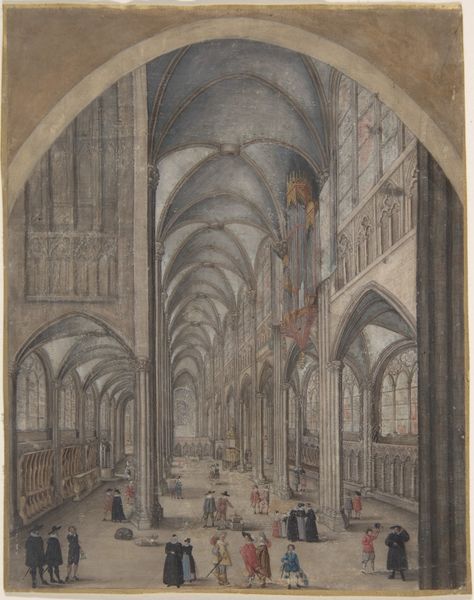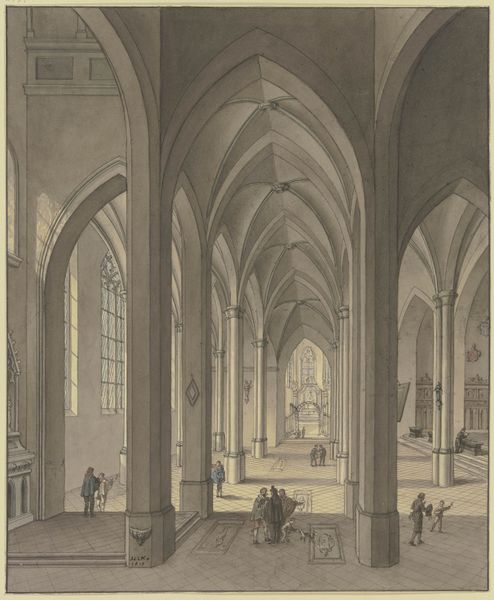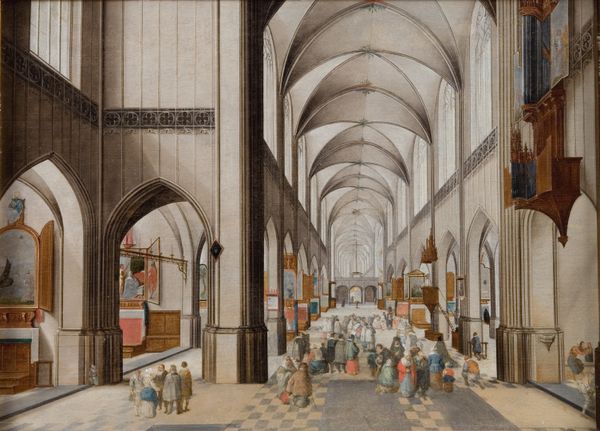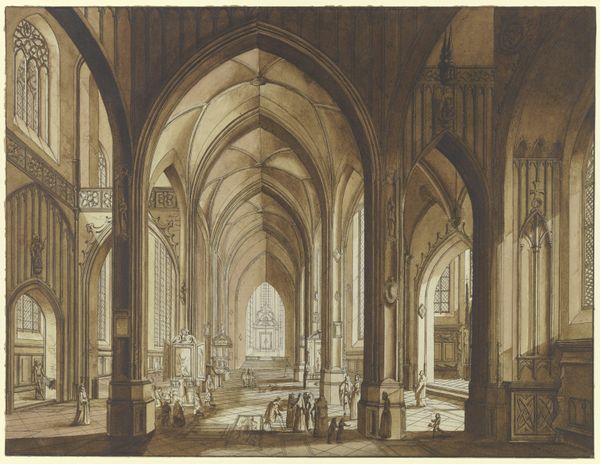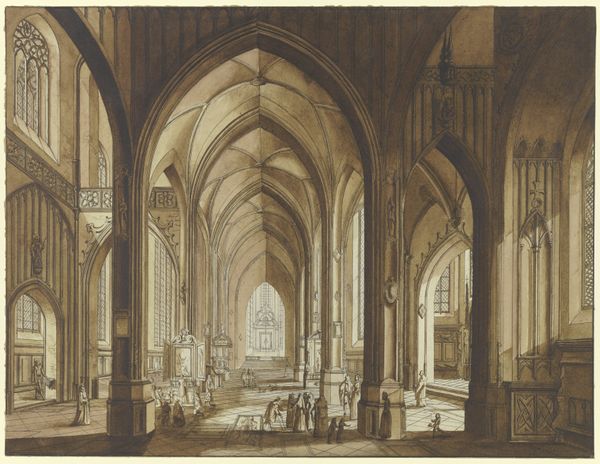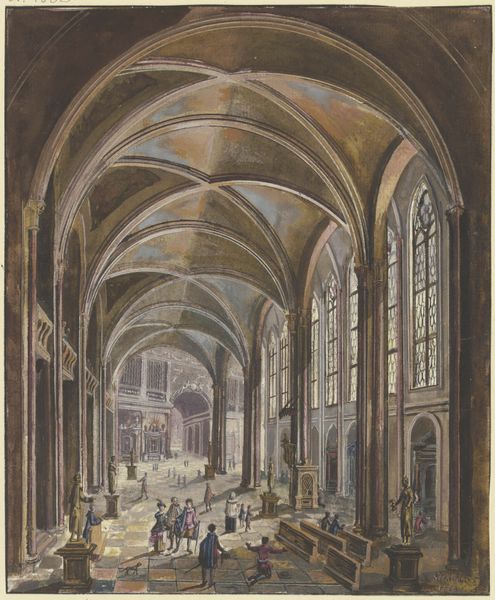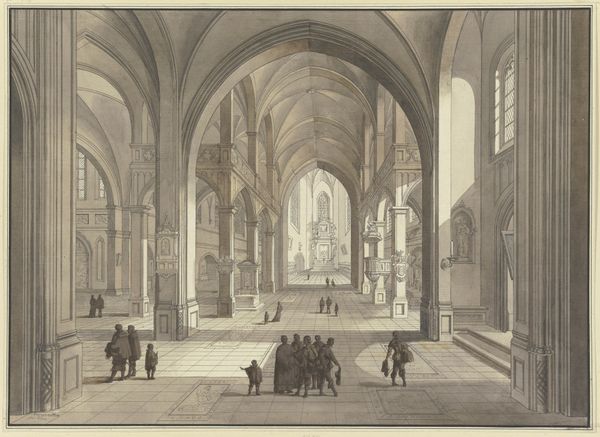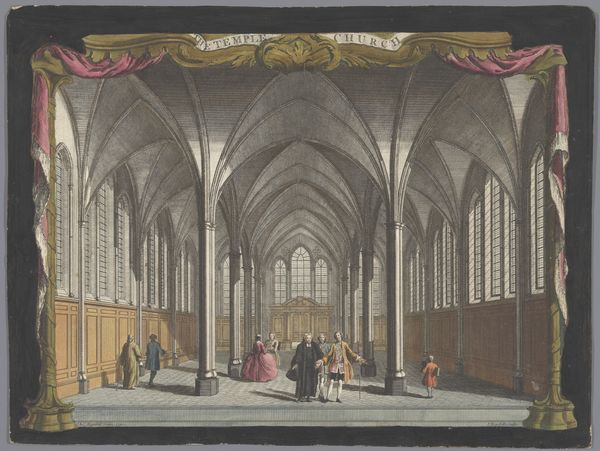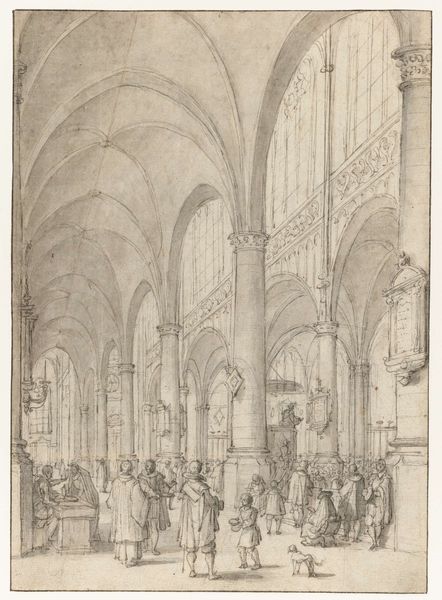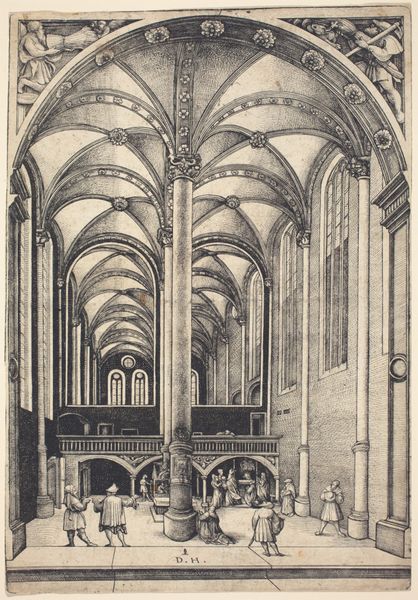
Inneres einer gotischen Kirche mit vielen Figuren
0:00
0:00
drawing, paper, watercolor, ink, architecture
#
drawing
#
netherlandish
#
baroque
#
landscape
#
paper
#
watercolor
#
ink
#
cityscape
#
genre-painting
#
watercolor
#
architecture
Copyright: Public Domain
Editor: This artwork, "Inneres einer gotischen Kirche mit vielen Figuren" by Hendrick van Steenwyck the Younger, rendered in ink, watercolor, and paper, gives me a sense of bustling serenity. What sociopolitical factors were in play that might explain this blending of everyday life with such a sacred space? Curator: That's a perceptive reading. Consider the role of the church in the Netherlands during the Baroque era. Though ostensibly religious, these grand structures also functioned as public forums, locations for civic functions, and even social gatherings. Do you notice the variety of people depicted? Editor: Yes, some are dressed formally, while others seem more casual. Some appear to be praying, others conversing. Was this an accepted part of the culture, this mixing of religious observance and daily life? Curator: Exactly. Steenwyck captures a moment in which the church hadn’t yet been entirely divorced from the secular world. Note how the architecture emphasizes perspective, creating a stage for the interactions. The politics of imagery were at play: showing the Church as accessible, a place for all. How might this influence public perception of religious authority? Editor: So the painting, then, becomes more than just a depiction of a church interior, but a commentary on the social function of religion at the time. I'd never have picked up on the idea of it being a depiction of accessibility and its impact on how church authority was percieved. Curator: Precisely. These images helped to shape, and perhaps even reinforce, particular social structures and power dynamics of the era. Considering how locations like museums, places intended to house meaning in artworks today, how they're inherently intertwined with the politics of the present. Editor: It’s fascinating to see how societal values and power structures were reflected—and possibly even shaped—by art in these public spaces. Thanks for broadening my understanding of how context transforms an artwork's message!
Comments
No comments
Be the first to comment and join the conversation on the ultimate creative platform.
